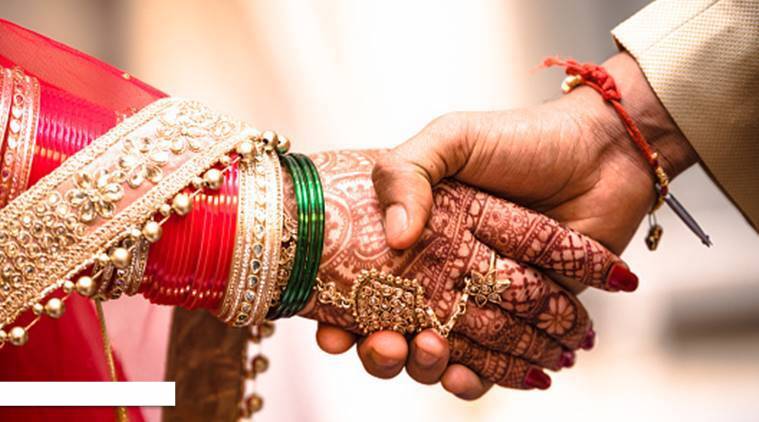"Equal Union: Setting the Same Marriage Age for All Genders."

"Equal Union: Setting the Same Marriage Age for All Genders."
Introduction: Marriage, as a social institution, has undergone significant transformations over time, influenced by cultural, religious, and legal factors. Central to these discussions is the age at which individuals are permitted to marry, which varies widely across different societies and historical periods. In recent years, there has been growing attention to the idea of establishing a uniform marriage age for men and women, reflecting evolving norms, gender equality concerns, and human rights considerations. This essay delves deeper into this concept, exploring its multifaceted implications, policy frameworks, and cultural nuances. Historical Perspectives and Legal Frameworks: Throughout history, the age of marriage has been subject to cultural norms, religious practices, and legal regulations. In ancient civilizations, such as Rome and Greece, marriage often occurred at a young age, particularly for girls, reflecting societal expectations and economic considerations. However, as societies evolved, there was a gradual shift towards raising the age of consent for marriage, driven by factors such as women's rights movements, child welfare concerns, and public health initiatives. Today, most countries have laws specifying a minimum age for marriage, typically ranging from 16 to 18 years old. These laws aim to protect individuals from the harms associated with early marriage, including increased risk of poverty, limited educational opportunities, and adverse health outcomes. However, significant variations exist between regions and nations, with some jurisdictions allowing exceptions under certain circumstances, such as parental consent or judicial approval. Rationale for a Uniform Marriage Age: Advocates for a uniform marriage age argue that establishing a standard age threshold for both men and women is essential for promoting gender equality, protecting human rights, and preventing harmful practices such as child marriage and forced marriage. By ensuring that individuals enter into marital unions with sufficient maturity, autonomy, and informed consent, societies can mitigate the risks of exploitation, abuse, and marital dissatisfaction. Furthermore, a uniform marriage age can contribute to social cohesion, stability, and family well-being by fostering relationships based on mutual respect, shared values, and emotional maturity. When individuals marry at a similar stage of life, they are more likely to have compatible goals, aspirations, and life experiences, reducing the likelihood of conflict and divorce. Additionally, delaying marriage and childbearing can have positive effects on women's educational attainment, employment prospects, and overall empowerment. Challenges and Considerations: Despite the potential benefits, implementing a uniform marriage age faces several challenges and considerations. Cultural norms, religious beliefs, and community traditions may influence attitudes towards marriage age, complicating efforts to enact uniform laws or policies. In pluralistic societies, where diverse customs coexist, imposing a uniform standard may encounter resistance and backlash from communities that value autonomy and cultural autonomy. Moreover, enforcing a uniform marriage age requires robust legal frameworks, institutional capacity, and public awareness campaigns to ensure compliance and accountability. In contexts where child marriage is prevalent, interventions must address underlying drivers such as poverty, lack of educational opportunities, and gender inequality. This necessitates multisectoral approaches that involve governments, civil society organizations, religious leaders, and communities working together to address root causes and promote positive social norms. Policy Recommendations: To address these challenges and advance the goal of a uniform marriage age, policymakers should consider the following recommendations: 1. Legislative Reform: Review and revise existing laws pertaining to marriage age to ensure consistency, clarity, and gender equality. Establish a uniform minimum age requirement for marriage, accompanied by safeguards against exceptions or loopholes that undermine its effectiveness. 2. Community Engagement: Engage with communities, religious leaders, and stakeholders to raise awareness about the importance of delaying marriage until individuals are mature, informed, and consenting. Promote dialogue and collaboration to challenge harmful norms and practices while respecting cultural diversity and religious freedom. 3. Support Services: Expand access to essential services for individuals at risk of early or forced marriage, including legal aid, counseling, health care, and educational opportunities. Strengthen referral pathways and support networks to ensure timely intervention and support for victims of child marriage and their families. 4. Data Collection and Monitoring: Invest in robust data collection systems to track progress, monitor trends, and evaluate the impact of interventions related to marriage age and child marriage. Improve birth registration coverage and accuracy to provide reliable data on the prevalence of child marriage and its demographic characteristics. Conclusion: The concept of a uniform marriage age for men and women represents a significant step towards promoting gender equality, protecting human rights, and preventing harmful practices such as child marriage and forced marriage. While challenges and complexities abound, addressing this issue requires concerted efforts across multiple sectors, including legal reform, community mobilization, and provision of support services. By prioritizing the well-being and rights of individuals, particularly girls and young women, societies can create a future where every individual has the opportunity to make informed choices about their marital unions, free from coercion, discrimination, and exploitation. Achieving this goal demands sustained commitment, collaboration, and advocacy from policymakers, practitioners, and advocates worldwide. Ultimately, the quest for a uniform marriage age is not merely a matter of policy but a moral imperative rooted in principles of equality, dignity, and justice for all.